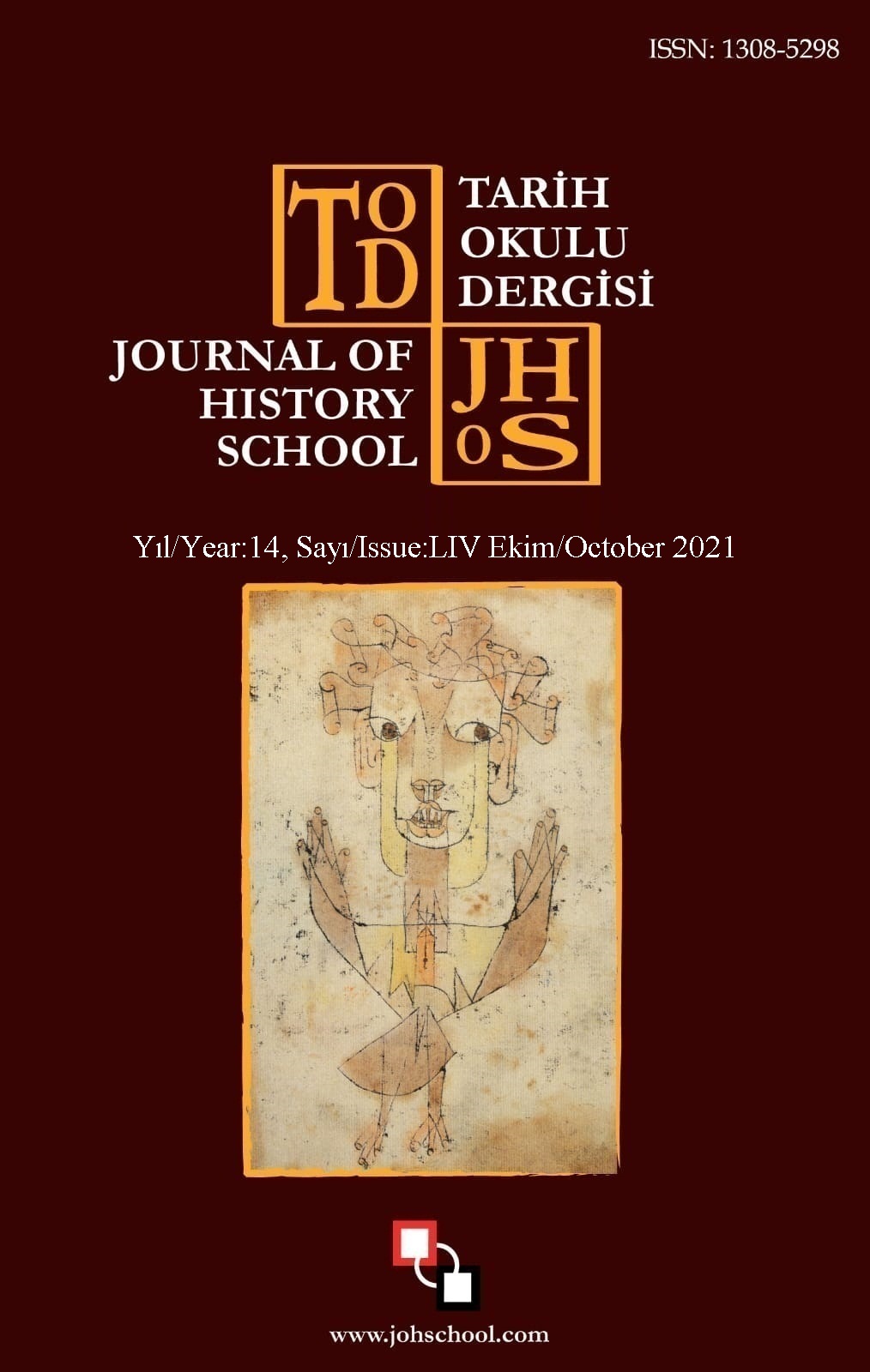HACI ARİF BEY’İN BESTELEDİĞİ “EL Y EYYÜHE’S-SÂKÎ EDİR KE’SEN NÂVİLH” ESERİNİN FORM VE MAKAM BAKIMINDAN İNCELENMESİ
Author :
Abstract
Bu çalışmanın amacı, şarkı formu bestekârlığının en önemli temsilcilerinden olan Hacı Arif Bey’in Rast makamındaki “Elâ Yâ Eyyühe’s-Sâkî Edir Ke’sen Nâvilhâ” adlı eserinin form ve makam bakımından analiz edilmesidir. Bestekârın, gerek şarkı formuna gerek Rast makamına olan nazari yaklaşımı betimlenerek şarkı formunda bestelenmesine rağmen adeta büyük soluklu bir form niteliği taşıyan bu eseri, detaylı bir biçimde incelenmiştir. Çalışmada kullanılan notaya TRT arşivinden ulaşılmıştır. Nitel araştırma yaklaşımıyla gerçekleştirilen bu çalışmada elde edilen veriler, doküman incelemesi ile form ve makam analizi yapılarak çözümlenmiştir. Araştırmada, Onur Akdoğu’nun form ve makam analizi yöntemi kullanılmıştır. Eser öncelikle makamsal açıdan incelenmiş, içerisinde kullanılan dörtlü, beşli, makam-usûl geçkisine ve ezgisel hareketliliğin yoğunlaştığı bölgeye göre (zemin, meyân) bölümlere ayrılmış, daha sonra diziyi oluşturan perdeler üzerinde yapılan kalışlara göre cümle ve cümlecikler belirlenmiştir. Bu sayede eserin hem makamsal analizi yapılmış hem belirlenen bölümler harflerle belirtilerek form şeması çıkartılmıştır. Araştırma sonucunda, bestekârın TRT repertuarında yer alan Rast makamındaki eserlerinden farklı olarak bu eserinde üç adet usûl geçkisi olduğu, Rast makamı dizisi içerisinde yer almayan Nihâvend, Hicâz gibi dizi ve dörtlü-beşliler kullanıldığı görülmüştür. Bu sonuçlardan hareketle eserin gerek form gerek makam bakımından büyük zenginlikler taşıdığı tespit edilmiştir.
Keywords
Abstract
The purpose of the present study was to analyze the piece “Elâ Yâ Eyyühe’s-Sâkî Edir Ke’sen Nâvilha” that was composed in Rast Maqam by Hacı Arif Bey, who is one of the most important representatives of song form composition, in terms of form and maqam. Although the theoretical approach of the composer to the song form and the Rast Maqam was described and composed in the form of a song, this piece, which has almost the feature of having a great form, was reviewed in a detailed manner. The note that was used in the present study was obtained from the TRT Archives. The data obtained in this study, which was conducted with the Qualitative Study Approach, were analyzed with the Document Analysis Technique by conducting form and maqam analyses. The Form and Maqam Analysis Method of Onur Akdoğan was used in the study. Firstly, the piece was examined in terms of maqam, divided into sections according to quartet, quintet, and maqam-usul modulations, and the grounds (zemin, meyan) where the melodic mobility were concentrated, and then, sentences and phrases were determined according to the stays on the notes that constituted the scalas. By doing so, the maqam analysis of the work was made, and the form diagram was obtained by indicating the determined parts in letters. As a result of the study, it was found that, unlike the pieces of the composer in Rast Maqam in TRT Repertoire, there are three usul modulations in this piece, and quartets and quintets such as Nihavend and Hicaz, which are not included in Rast Maqam scalas, are used. Based on these results, it was also found in the present study that the piece has great richness in terms of form and maqam.





